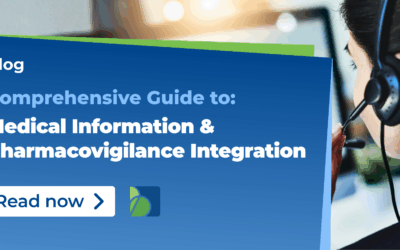World Tuberculosis Day is commemorated every year on 24th March to raise awareness of tuberculosis, which is still causing death of nearly 1.5 million people each year, mostly in developing countries. It marks the day in 1882, when Dr. Robert Koch announced that he had discovered the cause of tuberculosis, the TB bacillus. In comparison to other infectious diseases caused by a single infectious agent, tuberculosis is the second biggest killer worldwide.
Tuberculosis (TB) is an infectious disease caused by bacteria Mycobacterium tuberculosis, acquired from person to person through the air and most commonly affects the lungs. Depending on the medication(s) prescribed, the duration of the treatment can be from 4 to 9 months or even more. TB can be fatal, if it is not recognized and treated. However, TB is treatable and preventable. Identifying and treating those patients, who are infected but who have not yet become ill with the active TB can prevent the spread of TB in the community.
On the occasion of the World Tuberculosis Day we have talked with Biomapas Director Clinical Operations Nidas Jurjonas, MD, who is directly involved in supporting drug developers in tuberculosis clinical research, about the current situation and future perspectives in the field.

Nidas, what is the current situation in the global pharmaceutical market at the moment? Are there any new promising treatment options for tuberculosis being developed?
N. J. The situation is quite promising, because new compounds have appeared on the horizon, especially for the treatment of multi-drug resistant tuberculosis (MDR-TB). The current anti-tuberculosis medication pipeline shows several new drugs being tested in clinical trials at phase II and III for MDR-TB treatment. Several potential candidates remain in trial phase III. Two others new drug candidates are in trial phase II and the re-purposed drugs clofazimine and levofloxacin are in phase III and II, respectively. Novel drug combinations for shortened treatment of drug sensitive and/or drug-resistant TB, including new or re-purposed drugs, are under investigation in a series of Phase II and III trials.
How about the perspectives of clinical trials in this therapeutic area? What is important while choosing the region for a clinical trial?
N. J. For sure, there will not be a decrease in terms of new molecules being developed for the treatment of tuberculosis as current therapeutic options are not sufficient. One of the most important aspects while choosing countries and sites for the clinical trial is the prevalence of the disease in a certain region, as of course it will strongly influence patient recruitment. The highest prevalence of TB is in low and middle-income countries, therefore, late stage clinical trials should be conducted in this high-burden setting. According to European AIDS treatment group, approximately one-third of all TB patients are located in India and China. WHO identified 22 high-burden countries for TB which are scattered throughout Asia, Eastern Europe, Africa and South America.
What is the prevalence of tuberculosis in Eastern Europe and former CIS region?
N. J. MDR-TB is still ravaging the European region. According to the analysis reported by WHO in 2013, 85% reported tuberculosis cases occurred in 18 countries in Eastern Europe and Central Asia, including Romania, Georgia, Uzbekistan, Kazakhstan and Russia. Unfortunately, most of the deaths are also reported in Eastern Europe and CIS countries. Of the countries that have universal or near universal (>95%) first-line drug-susceptibility testing (DST) coverage among bacteriologically confirmed TB cases, the proportion of MDR-TB appears to have largely leveled off in Armenia, Estonia, Georgia, Latvia, and Lithuania, with the exception of Belarus. The Russian Federation has also experienced a slight but steady increase in MDR-TB since 2009.
What is Biomapas’ experience in clinical development of anti-tuberculosis medication?
N. J. Since 2001, around 10 percent of our clinical studies were conducted on anti–infective agents, including tuberculosis medicines, starting from Phase I to phase IV. Most of these trials were conducted in Lithuania, Latvia, Estonia, Belarus and Georgia. In recent years we have observed a growing demand of clinical trials for TB in the CIS region, especially Georgia.
Taking into account what you have mentioned before, CIS countries seems like a relevant location for conducting TB clinical trials. How about the overall conditions in these countries? Are there enough qualified investigators and sufficient infrastructure for such clinical trials?
N. J. Actually, the capacity of countries located in CIS region regarding the clinical trials of medicines is currently severely underestimated. Countries are willing to financial their healthcare system and infrastructure has been constantly increasing in the past decade. Between 1995 and 2012, health expenditure as a proportion of GDP increased most rapidly in Georgia, Moldova and Tajikistan; it also slightly increased or remained stable in Kyrgyzstan, Russia and Ukraine. Ongoing changes in legislation and organization of clinical trials in these countries did improve timelines and reduced complexity of regulatory approvals. Moreover, all CIS countries have a relatively large health workforce and especially large number of physicians per capita. It is important to stress that they are unevenly distributed geographically and in terms of specialization. Healthcare professionals tend to be concentrated in the capitals or large cities, while there are shortages in rural and remote areas.
Thank you for your time and an informative conversation.
Olivija Simkute
References:
- Wallis RS.et al.” Tuberculosis -advances in development of new drugs, treatment regiments, host-directed therapies, and biomarkers”. The Lancet Infectious Diseases 16.4(2016): e34-e46.
- European AIDS treatment group
- Zignol M, Dara M, Dean A S. Drug-resistant tuberculosis in the WHO European Region: an analysis of surveillance data. Drug Resist Update 2014










